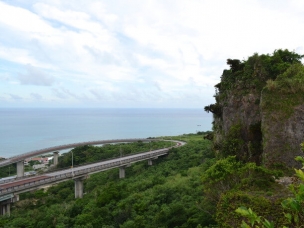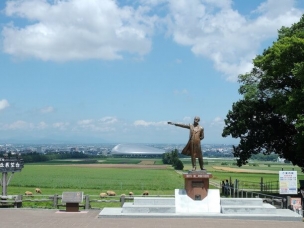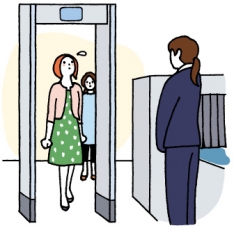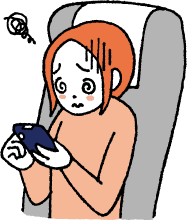Learn the history of money The Bank of Japan Otaru Museum
The Bank of Japan Otaru Museum is a rare historical building in Hokkaido because it was built over one hundred years ago. The former Bank of Japan Otaru branch was designed by a well-known architect, Mr. Kingo Tatsuno and his apprentice, Mr. Uheiji Nagano. Mr. Tatsuno designed the Tokyo Station that is known for its red brick structure during Meiji period.
Now the building is used as the Otaru Museum and one of the popular places in Otaru to visit. In the museum there is a corner where you can actually feel how heavy one hundred million yen (one million US dollars) is!


Time travel to Meiji Era?
The Bank of Japan Otaru Museum is a Renaissance style building designed by Mr. Tatsuno who is known for designing the Tokyo Station, and Mr. Shinichiro Okada, and Mr. Uheiji Nagano were involved in the designing of the Otaru Museum, too. The Otaru Museum is a two-story building with five domes on its roof.

When you enter the museum, you see bank tellers’ windows that are preserved just as they were in the Meiji era. The well-used wooden frame windows say “cash transaction.”
The ceiling is 10.5 meters (about 35 ft.) high and the building is very spacious. The museum is divided into three different zones –the History exhibition zone, the Banking exhibition zone, and the Multi-media corner.
The History exhibition zone has panels explaining about the history of the Bank of Japan and the displays have actual banknotes since World War II. This financial district was once called the “Wall Street of northern Japan” and there is a display of miniature buildings from that time. There are twelve statues of owls on the interior wall and eighteen owl statues on the exterior wall. Please check them out!

Interesting! Money on display
The Bank of Japan Otaru Museum has the exhibits on the history of money as its name “bank” suggests. The money history exhibits are in the back of the tellers’ windows. You can learn about how the money system was established and the commodity prices that have been rising since the Meiji era. The display of banknotes is very interesting.

All the banknotes that have been issued until now are on the display.
For example, the display has the banknote of Price Shotoku issued during the Meiji era, and other banknotes have Mr. Taisuke Itagaki, Tomomi Iwakura, and Hirobumi Ito, and the currently circulating banknote of Dr. Hideyo Noguchi. Most of the banknotes can still be used even now. The old banknotes have an additional value and you would waste it if you spend them now, but it is possible. You can also learn about the technology to prevent counterfeited banknotes from the display.

Otaru once called, the “Wall street of Northern Japan”
In Otaru, there were a lot of financial institutions such as private banks and insurance companies as well as the former Bank of Japan Otaru branch.
The former Hokkaido Bank, Head Office that is used as Otabu Bine restaurant was built in 1912 (Meiji 45), and the former Mitsui Bank, Otaru branch was built in 1927 (Showa 2), and there were eight more financial institutions standing in a row. How about checking out this model of the financial institutions and actually visiting the other buildings, too?

What is inside the safe?

When you hear a word “bank”, you’ll be interested mostly in a safe that is used to secure money. You sometimes see the safe in a movie or a drama but you can never see the actual safe unless you work for the bank. Going into the safe is like a dream in a dream. Here in the Otaru Museum there is a safe that was actually used and you can go inside of it. When you go in, you see the replica of 100 billion yen! It gives you a pretty good picture of what is like if you actually have 100 billion yen. The inside of the safe is so spacious that the mountain of 100 billion yen may look small.

Really feel the weight of one hundred million yen!?
Have you ever touched the cash of one hundred million yen? Do you know how heavy it is and what amount it is?
The Otaru Museum has two objects on display. The first one is the finely shredded one hundred million yen in the big display case. If you take a close look at this, you can see the print of bills and know that it is the real money in the case.
The second one is an exhibited object that is equivalent to one hundred million yen and you can try to lift the object on the display to see how heavy one hundred million really is. You usually don’t get to lift it and it is very interesting!

- There is a gift shop in the back of the museum and they sell unique items with a motif of bills, and sweets and cakes. You can’t buy them anywhere else. How about checking them out for a souvenir of your trip or a gift for someone special.
- The museum has pamphlets that supplement the information of the exhibited objects. They are very helpful to deepen your understanding.
- You must see the exterior and interior of the museum that have remnants from the Meiji era. You’ll know more trivia and might give you a chance to share the knowledge with someone somewhere. The exhibits are very informative and it is a very interesting place to visit.
They have guided tours twice a day from 2:00p.m. to 2:30p.m. and 3:00p.m. to 3:30p.m. If you want to learn more about the museum, make sure you won’t miss the time.
- Spot name(Ja)
- 日本銀行旧小樽支店金融資料館
- Address
- 1-11-16 Ironai Otaru-Shi Hokkaido
- Address(Ja)
- 北海道小樽市色内1−11−16
- Telephone
- 0134-21-1111
- Price
- free
- Open
- 10:00a.m. ~ 5:00p.m
- Close
- Wednesdays, year-end and New Year
- Parking lot
- none
- Note
- HP:http://www3.boj.or.jp/otaru-m/






